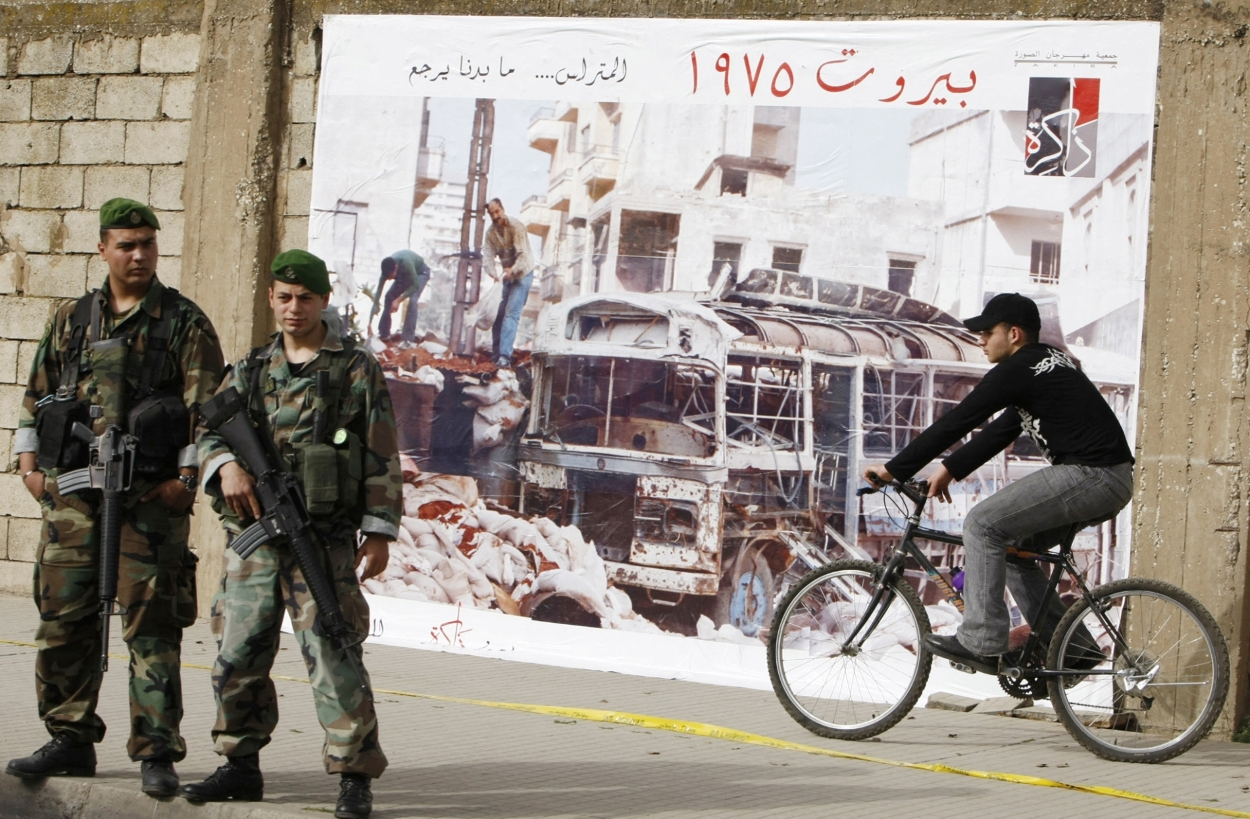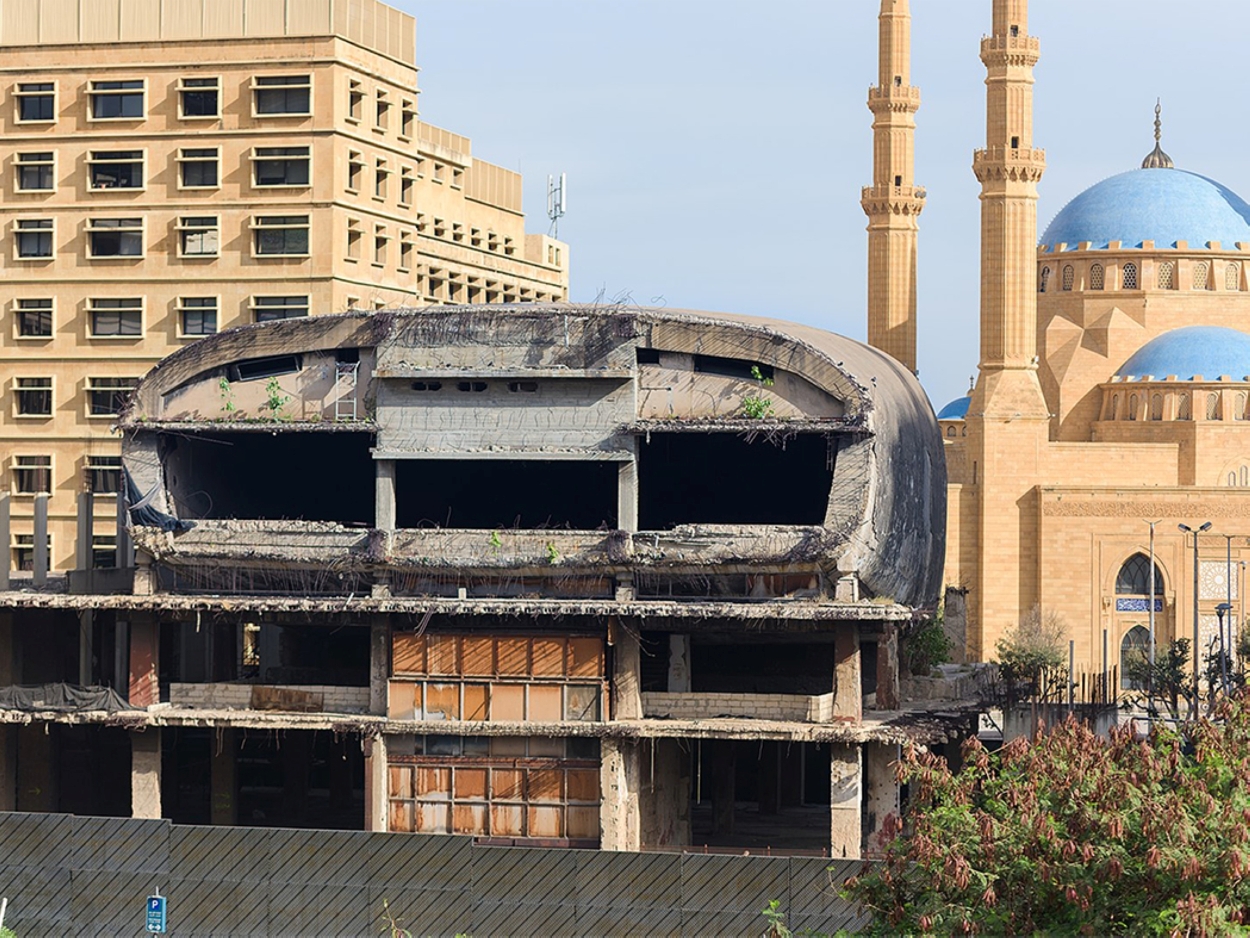Lebanon: 50 years after the war stopped … it still hasn’t truly ended
Should the unity of nations be preserved if the price is perpetual rivers of blood?
By Hicham Bou Nassif | Weinberg Associate Professor of International Relations and the Middle East and George R. Roberts Fellow at Claremont McKenna College-California
The Lebanese Civil War erupted in 1975 as a convergence of internal and external factors unleashed a cycle of sectarian violence that lasted until 1990. Internally, the Lebanese system — built on a Sunni-Christian power-sharing arrangement — failed to accommodate the rapid rise of Shiite influence, which had shifted the balance of power among Lebanon’s communities in less than half a century. When the Lebanese Republic was established in the 1920s, Shiite demographics were significant but politically marginalized. The ensuing decades witnessed a swift and transformative generation of Shiite youth less willing to settle for the Christian-Sunni status quo.
This Shiite upheaval was supported by the charismatic leadership of Imam Musa al-Sadr, the establishment of the Supreme Islamic Shiite Council, and the mobilization of Shiite youth through political movements such as leftist groups and later the Amal Movement. At the same time, Druze leader Kamal Jumblatt saw an opportunity to challenge the existing system driven by his personal ambitions to secure either the presidency or the premiership. Sunni demands to expand executive authority away from the Christian presidency further aligned with the grievances of Lebanon’s Shiite and Druze communities. Thus, these three Islamic groups united in their call for redistribution of power — a demand the Christian elite resisted, setting the stage for domestic divisions and sectarian conflict.
Yet structural and systemic crises alone cannot explain why the war began in 1975 rather than earlier or later. A political catalyst is always necessary — a spark to ignite sectarian tensions into full-blown civil war. That spark was external, rooted in regional transformations after Jordan’s “Black September” events in 1970, and Egypt’s gradual disengagement from the Arab-Israeli conflict after the 1973 war. Following Black September, Palestinian leadership and thousands of fighters were expelled to Lebanon, turning the country into the last Arab staging ground for attacks on Israel after other fronts — Jordan, Syria, and Egypt — had closed.
If the societal structure and the systemic crisis are constant factors, why does war break out in one year and not another? There must be a specific political trigger, acting as a spark that ignites sectarian contradictions into a full-blown civil conflict.
Even before their Jordanian expulsion, Palestinian factions showed little regard for the burdens they imposed on Lebanon, transforming its southern regions into a direct confrontation zone with Israel. The loss of their Jordanian base after 1970 intensified their reliance on Lebanon, further eroding any semblance of sensitivity toward Lebanese sovereignty. Meanwhile, the US, prioritizing Egypt’s shift from the Soviet sphere to the Western bloc, facilitated Syrian military intervention in Lebanon to curb Palestinian factions that threatened Egypt-Israel peace negotiations and, consequently, American interests.

Syrian forces, backed by tacit American and Israeli approval under the infamous “red lines” agreement, introduced further complexity to an already volatile conflict, creating Lebanese-Syrian, Palestinian-Syrian, and Lebanese-Palestinian fault lines that rendered the war uncontrollable.
Debates over the war’s causes have long divided Lebanese perspectives. Leftist and Muslim narratives often highlight the systemic flaws of Lebanon’s sectarian order and its inherent inequalities, while Christian interpretations emphasize external factors, particularly Palestinian and Syrian interference. The truth, however, lies in the interplay of both internal and external dynamics — the intersection of domestic sectarian animosities and destabilizing regional interventions.
In Iraq and Syria, as in Lebanon, the hero of one group is the demon of another, and vice versa.
It is worth noting that Lebanon’s internal divisions were entrenched even before foreign powers entered the fray, and these sectarian animosities persisted long after their departure. The expanded boundaries of Lebanon in 1920 added Christian-Muslim and Sunni-Shiite fault lines to the pre-existing Maronite-Druze divide that had bloodied Mount Lebanon during the 19th century. These overlapping fissures are deeply woven into Lebanon’s turbulent history, directly tied to its enduring sectarian strife.
The Lebanese Civil War ended ambiguously, without addressing its root causes. The various militias retained their youthful energy and were capable of resuming hostilities for years. The conflict may have shifted the balance of power among Lebanon’s sectarian communities, but it failed to resolve the fundamental tensions between them. For example, disagreements over non-state weapons persisted, dividing Lebanese society between those supporting and opposing Palestinian arms in the 1970s and later Hezbollah’s arsenal — always along sectarian lines.

This unresolved discord is mirrored in neighboring Iraq and Syria, where sectarian divides similarly fuel persistent civil wars. In Iraq, Arab-Kurdish and Sunni-Shiite rivalries have fractured the state, while in Syria, Arabs, Kurds, Sunnis, and Alawites battle for power. Just as Lebanon wrestled with competing claims of legitimacy for its leaders, Iraq’s Saddam Hussein and Syria’s Assad family enjoyed undeniable support within their core constituencies while remaining antagonistic figures to others.
If the price of preserving the unity of Lebanon, Syria, and Iraq is the periodic shedding of rivers of blood, is it a price worth paying? Should the unity of these nations be maintained?
The broader question emerges: If preserving the unity of countries like Lebanon, Iraq, and Syria demands cyclical rivers of blood, should such unity be maintained? Is it time to reconsider the political systems imposed by colonial powers — systems that sustain unstable central authority while denying vulnerable communities autonomous governance, thus prolonging endless struggles over power and influence?
A reexamination of these political assumptions across the Levant is overdue. It may be the only way to prevent the perpetuation of this region’s tragic legacy of violence.
This article was originally published in Arabic by Majalla on 10 April 2025. The original can be found here.
The views expressed in this op-ed are solely those of the author and do not necessarily represent those of SyriacPress.

















